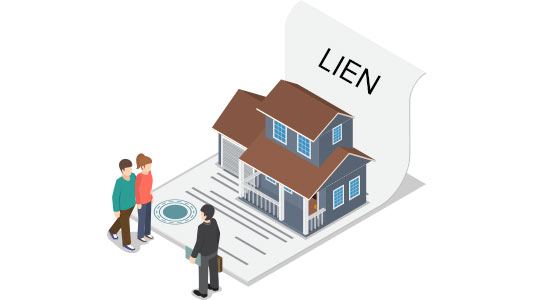OH, THOSE HAZARDS OF THE ESCROW DESK!
It is the day before closing and the file is set up for recording. Buyer and his lender’s money are all in and documents are all signed. Out of the blue, we are cc’d on an email from the Seller’s agent to the insuring title company. The email is inquiring into a “correction to the Certificate of Occupancy.” What?
Red Flag!![]() A Certificate of Occupancy is a document issued by the city/county Building Department stating that the construction or rehab work passed final inspection and the property is ready to be occupied.
A Certificate of Occupancy is a document issued by the city/county Building Department stating that the construction or rehab work passed final inspection and the property is ready to be occupied.
That’s great in the normal course of events, but this property is in escrow and nowhere on our contract did it state that construction work was being done. This is a matter of particular importance which the escrow officer should have been made aware of as it is an issue that most definitely will affect the closing.
Construction payment claims are matters that fall under California’s Mechanic’s Lien Law (CA Civil Code Sections 8000 et seq) which delineates how Mechanics’ Liens work. In simple terms, properly licensed contractors who have complied with the law, have the right to place a mechanic’s lien on the property when they are not paid for the construction work they have done. Pursuant to the law, this lien is effective NOT when they hammer down the first nail, but the minute the construction started, their trucks or even the port-a-potty rolls on to the property. This means that any lien filed by unpaid contractors would take priority if unpaid even if escrow closed, a new loan filed, or a new owner on the property installed. What would have been a brand new first mortgage would become second to the mechanic’s liens, no matter when the liens were filed. Imagine the concern of the buyer, who now becomes responsible for the lien, his new lender, whose loan position is in jeopardy and the title company which insured the property cleared of all seller’s liens.
So here is the issue: title companies WILL NOT allow a transaction to close if they have any inkling that construction has been done OR if they think work will start even before the closing. Here are some scenarios, and they are all subject to the title companies’ case by case determination:
Case #1 – If construction has been completed, the owner/seller has to file a Notice of Completion within the time period designated by the law (10 days after the date of completion). They must submit to the title company the names of the contractors, proof that the construction bills were paid, and submit their own financial statement showing they have sufficient cash in the bank to match the amount of construction cost. If approved by the title company they will ask the Seller/owner to sign an Indemnity Agreement that releases the title company from any mechanic liens that might be filed after closing.
Case #2 – If construction has started but not finished, the same applies as Case #1 except there is no Notice of Completion filed.

Case #3 – If construction was completed more than 90 days before the contemplated closing of the transaction, and the Notice of Completion was filed within the time frame required by law, then the title company may not require any of the above as the time period for effective filing of mechanic’s liens would have passed.
Case #4 – If construction is contemplated after the closing and the title company knows that, they will send an inspector to the site bright and early on the day of closing to see if any trucks, construction parts, (even that port-a-potty) and fences have been placed there. If none, the escrow is allowed to close. If there is, closing is stopped immediately and the seller will go back to Case #1 .
Why the seriousness? Again, California’s Civil Code Section 3082 et seq was written to make sure that contractors and construction workers have a way and means to make sure that their labor and hard work were not made in vain. It allows for protections in which their payments are not relegated to the bottom of the pile of debts and other encumbrances. If they did the work, they should get paid before any other new loans or liens are put on. So, in layman’s terms, even if a mechanic’s lien was recorded after the new loan document, that lien would take priority if the work on the property had already started.
If the escrow had already closed and a new buyer has ownership, that lien will continue to affect the property and it will become the buyer’s responsibility. The buyer is within his rights then to file a claim against his title insurance company because ownership of the property was not cleared before the closing.

The new lender may also file a claim against the title company as the priority of their loan is jeopardized. In the event of a foreclosure by the lender, the liens would have to be paid first before the lender gets his share of the sale. That could take a chunk out of their proceeds.
Title companies are in the business to insure that title to the property will be transferred in the condition the parties have contracted for. They are in the business of risk management so they will minimize their exposure to risk. Fear of lawsuits and claims are always the biggest deterrent. Thus they are very careful about allowing a transaction to close if they find out there was construction done or contemplated. As the escrow officer is the main contact with the clients on the transaction, it is his responsibility to alert the insuring title company and to advise the owner of the property of the consequences of letting the work start before closing.
Briefly, here are some of the markers that an owner of the property and a contractor is required to know about the process of the Mechanic’s Lien Law:
➤ Notice of Non-Responsibility – If the owner of the property is aware of the construction but is not responsible for it the owner must execute, post on the property and record a Notice of Non Responsibility at the county recorder’s office within 10 days after he is made aware of the work. Example: When a tenant is doing the construction.
➤ Preliminary 20 day notice – Written notice by the person who did the work (claimant) that he has a possible claim. The notice is filed (not recorded) with the county recorder’s office within 20 days from the start of his work.
➤ Notice of Completion (NOC) – Within 10 days after the work is done, the owner or person who ordered the work will record the Notice at the county recorder’s office. A properly recorded and valid NOC gives constructive notice to all claimants. These claimants, depending on whether they are the original contractor, subcontractors and whether there was a construction loan fund handling the funds, have a certain time period to file and record their claims – 60, 30, 120 days respectively.
➤ A recorded Mechanic’s Lien – A properly recorded lien claim will affect the property for no more than 90 days, which means the claimant has to file an actual Action (lawsuit) within that time period if he is not paid.

With these markers it is easy to understand why a title company will wait at least 90 days after a valid NOC has been filed to insure a property without the owner signing an indemnity agreement. If no claim has been recorded during this 90 day time period, then the claimant has to look to other means to get paid.
Going back to our specific transaction in the first paragraph, once the title company was alerted to a Certificate of Occupancy, which meant that there was construction work to be considered, they refused to allow the closing even though all documents and funds were in. The seller was made to sign the indemnity agreement, provide the list of contractor(s) and subs, their invoices, and our escrow officer was instructed to pay all the invoices (approximately 20) at closing before net proceeds could be given to the seller. It was disconcerting to find out that something of this magnitude was not communicated to the escrow officer by the seller or the real estate agents who had intimate knowledge of the condition of the property. If it wasn’t for a listing agent’s inadvertent email, we would have closed the transaction. If anything happened after closing, like the seller refusing to pay the 20-some construction invoices, the buyer, his lender and the title company’s position would have been jeopardized.
And what a hazard that would have been to all.
Author’s note:
This article pertains to laws in the state of California. Every state has their own mechanic liens law which differs and readers from other states are cautioned to research the laws pertaining to the state where the property is located.This article is published only to provide a general overview of the issues that Escrow Holders may encounter in a transaction affected by construction. Readers are instructed to obtain their own independent legal and financial counsel for their own particular case or concerns. Neither Viva Escrow! Inc. or the author are allowed to provide such counsel.

Juliana Tu, CSEO, CEO, CBSS, CEI, SASIP
Escrow Manager

Good news! “The Art of Escrow” is out! Look for it on www.amazon.com!

The Art of Escrow:
The Fight For Your American Dream and the Pursuit of Homeownership
Available now at Amazon.com
- Threats to Escrow – Part 5 – Document Fraud! - May 19, 2023
- When the Loan Got Sold and You Just Closed Escrow - April 6, 2020
- Mechanics Lien - October 7, 2019
- Are You a Foreigner and Need to Know About U.S. FIRPTA Withholding Laws? - February 20, 2019
- When the FIRPTA
Withholding Goes Wrong - February 20, 2019
Join Our FREE Viva Escrow Forums

